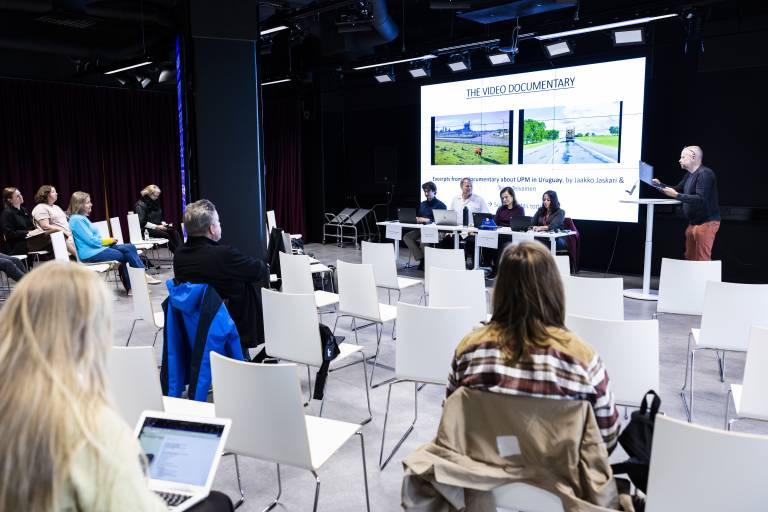As part of their course LFCS01, first-year LFC students have written policy solution papers about wicked problems. Wicked problems are issues that are difficult or impossible to solve. Students were asked to detect and discuss a wicked problem and develop possible policy solutions to overcome the problem. Next we will publish some of the students’ works.
Introduction
In this solution paper we are focusing on a wicked problem and its policy change, which in this case is the EU’s Migration Policy. Wicked problem is a complex and unique problem, which does not have a clear definition, and these problems can never be completely solved. Solutions for wicked problems cannot be right or wrong, however they can be better or worse (Mattila, 2020).
EU migration policy is aiming to control migration between the EU countries with different principles and measures. After a migration crisis in 2015, the EU made the measures to be able to regulate and control better migration flows and external borders. The irregular arrivals reduced by more than 90% after these changes (EU migration policy, 2020).
Description of EU’s migration policy as a wicked problem
In the following section, we will describe the EU’s migration policy as a wicked problem using the characteristics laid out by Rittel and Webber (1973) as a framework for the analysis. The EU is often described as a sui generis actor that differs from traditional state and international actors, lacking their capabilities despite dealing with complex international issues (Phelan, 2012). The elaborate institutional configuration of the EU with a multiplicity of stakeholders, the multifaceted nature of the issue, and its political ramifications make immigration a wicked problem.
First, there is no definitive understanding of the root cause of immigration to the EU on one hand, and the EU’s ability or lack thereof to formulate a functional migration policy on the other hand. Migration to the EU can have both internal and external causes, and defining the problem also implies choosing the solution. For example, internal factors deal with the institutional characteristics of the Union, while poverty and a lack of economic opportunities in the areas adjacent to Europe’s borders can be seen as external determinants. Choosing the right set of causes furthermore depends on who frames the problem: conservative member states or the EU institutions.
Second, there are no right or wrong policy measures, only better or worse ones that depend on political judgment. As such, the decision-makers – the EU institutions and member states – must consider different outcomes on an economic, legal, and moralistic basis. Moreover, every EU-wide attempt at finding a common approach will create a ripple effect across member states with economic and political ramifications that are difficult to foresee and contain. Examples of this include increased spending on border control or the rise of far-right and anti-EU sentiment.
As such, the EU faces a difficult dynamic in which it must balance the demands of both liberal and conservative member states while respecting its international obligations and foreign policy goals.
Policy solutions
There exists no overarching definition for policy (Cairney, 2016), yet, policy can be defined by various means suitable for task and context at hand. Policy as a concept may include what i.e. governments choose to do and not to do. Formation of a policy often relates to the activity combining government’s and shareholders interests (Pekkola, 2020). This application is also present in this solution paper, which covers policy solutions to EU’s migration policy drafted and formed by EU institutions and its member states’ governments including necessary shareholders.
Policy as a working definition has to include legitimation, aim or a goal, which can be evaluated by its results (Pekkola, 2020). In our case, the legitimation is achieved by the agreement of EU institutions, individual member states and shareholders. The aim is to enhance the current migration policy, and such aims can be evaluated by concrete achievements of the policy, i.e. by observing how responsibilities and quotas are divided among individual EU member states.
As possible policy solutions, we came up with the following proposals. Firstly, enhancing current legal framework by means of amending i.e. Dublin Regulations and EU’s 2020 Migration Pact that recently failed (Brzozowski, 2020). Secondly, by lowering the majority threshold of the EU’s decision making regarding adoption of migration policy. And thirdly, by suspending a member state hindering decision-making in the EU, as a warning example of breaching common EU values and agreements. Applied in the context of a wicked problem, these proposals promote short-term solutions to the EU’s migration policy, which as a wicked problem can not be solved once and for all, yet, temporary solutions mentioned above could lead to progress.
Conclusion
In this solution paper we examined the EU’s migration policy as a wicked problem. After familiarizing ourselves with the concept of wicked problem, we analysed the European Union’s current migration policies, its problems, characteristics and main actors. In the analysis part of this solution paper, we noticed that the EU faces relatively complex challenges. In order to come up with policies that every EU member state agrees on, the EU must balance the demands of both liberal and conservative member states. Furthermore, this has to be done while respecting the EU’s international obligations and foreign policy goals.
After utilizing the analytical framework, and extending our knowledge on wicked problems, we focused on examining possible solutions regarding the EU’s migration policy. As policy solutions, we suggest the following actions; enhance the current legal framework and EU’s 2020 Migration Pact, lower the majority threshold of EU’s decision making, and finally, suspend (or warn/penalize in other means) member states that hinder the decision making regarding EU policies. As discussed previously, these suggestions promote short-term solutions only. Despite this, the temporary solutions could have a positive impact, and enhance the progression of the EU’s migration policy.
This solution paper was compiled by Nelli Lius, Aleksi Alanko, Jere Vuorihuhta, Mika Langel and Tuukka Tulosmaa.
References
Brzozowski, A. (2020, September 24). In Brussels, Visegrad countries reject the EU’s migration plan. EURACTIV. https://www.euractiv.com/section/justice-home-affairs/news/in-brussels-visegrad-four-reject-the-eus-migration-plan/
Cairney, P. (2016). The politics of evidence-based policy making. Palgrave MacMillan UK.
European Council. (2020, October 2). EU migration policy. https://www.consilium.europa.eu/en/policies/migratory-pressures/
Mattila, M. (2020). Key concept lecture: Lecture on wicked problems [Panopto video]. Retrieved from https://moodle.tuni.fi/mod/page/view.php?id=717720
Pekkola, E. (2020). Key concept lecture: Policy change and knowledge [Panopto video]. Retrieved from https://tuni.cloud.panopto.eu/Panopto/Pages/Viewer.aspx?id=21369c97-f8bb-4db5-844d-ac4700ce3e90
Phelan, W. (2012). What is sui generis about the European Union? Costly international cooperation in a self-contained regime. International Studies Review, 14(3), 367–385. https://doi.org/10.1111/j.1468-2486.2012.01136.x





